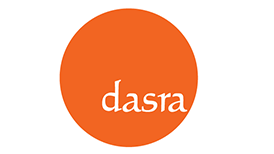レポート

Written in collaboration with
Written in collaboration with

Executive summary
India’s economic growth remains robust, with a GDP growth rate of 8.7% in FY 2022. However, despite strong GDP growth, a burgeoning middle class, and striving to become a $5 trillion economy by FY 2025, multi-dimensional inequalities continue to persist in India. As the country emerges from the Covid-19 pandemic, it is critical that ecosystem stakeholders invest in strengthening the philanthropic infrastructure for building community resilience.
India’s social sector spending as a percentage of GDP grew from 8.6% in FY 2021 to 9.6% in FY 2022 due to 35% growth in public spending. Despite this progress, India remains well short of NITI Aayog’s estimate (13% of GDP) of total annual funding required to achieve United Nations Sustainable Development Goals (SDGs) by 2030.
The public sector has been carrying the weight of social sector spending in India, accounting for 95% of total spending. However, with an expanding budget deficit, higher debt burden, and increased crude oil prices, private philanthropy needs to step up and play a catalytic role in bridging the funding gap in India. Overall, private philanthropy has grown at a moderate pace of about 8% from FY 2017 through FY 2022, despite foreign funding remaining stagnant. In FY 2022, private contributions totaled about $13 billion (INR 1.05 lakh crore). Corporate social responsibility (CSR), family philanthropy (ultrahigh net worth individuals [UHNIs; net worth above INR 1,000 crore], high net worth individuals [HNIs; net worth of INR 200–1,000 crore], and affluent individuals [net worth of INR 7–200 crore]), and retail giving cumulatively contributed about 86% of private philanthropy in India and are expected to remain the foundation of private giving in India.
CSR spending has grown at 13% over the last five years, reaching $3.3 billion (INR 27,000 crore) in FY 2022. While it grew at a slower pace in FY 2022, we expect it to sustain its historical growth and reach $6.4 billion (INR 52,000 crore) by FY 2027.
Family philanthropy has grown at 12% over the last five years, reaching $3.6 billion (INR 29,600 crore) in FY 2022 driven primarily by a growth in HNIs/affluent givers (net worth of INR 7–200 crore). UHNI contributions have been volatile with contributions (excluding contributions by Azim Premji) dropping by 5% in FY 2022, despite a 9% increase in their cumulative wealth. Indian UHNIs continue to donate substantially less compared to peers in the US, UK, and China.
Retail giving in India continues to be community-driven with just over 22% of contribution value coming from formal giving. It has grown at a modest 6% annually from FY 2017 to FY 2022, with contributions reaching $4 billion (INR 32,700 crore). However, with the expanding middle class and the sheer growth in the number of donors, retail giving is expected to grow at 9% annually and contribute about 29% of total private giving by FY 2027.
The large funding gap makes clear that all the cohorts within private philanthropy will have a crucial role to play in bolstering inclusive and sustainable development. Narrative-driven retail giving is well positioned to address urgent and important community needs. Corporate India, which is bound by the CSR framework, can direct funding towards scaling proven nonprofit initiatives. HNIs and affluent givers are an emerging cohort with high potential to strengthen the philanthropic ecosystem. UHNI givers can play a particularly important role in strengthening the philanthropic infrastructure by providing flexible and long-term capital.
Within family philanthropy (UHNIs, HNIs, and affluent givers), we see two cohorts as harbingers in reshaping giving, disrupting sector barriers. Now-Gen givers, who are professionals and entrepreneurs with first-generation wealth, and Inter-Generational givers, which includes the current generation of traditional family philanthropists, are transforming giving by looking beyond historical funding preferences and beginning to focus on underrepresented causes. Over 90% of Inter-Gen and Now-Gen donors from our sample want to be increasingly involved in emerging causes such as climate change; gender, equity, diversity, and inclusion (GEDI); and strengthening philanthropic infrastructure. Most of these Inter-Gen and Now-Gen givers are open to adopting catalytic ways of giving: willingness to share insights, unrestricted funding, and collaborative funding. Giving behaviours of Now-Gen and Inter-Gen funders suggest a positive directional shift in philanthropy as we head towards India@100.
Private philanthropy has a unique role to play in building bridges by working at the intersection of government, businesses, foundations, civil society, and communities. It is critical to harness diverse resources and patient capital that strengthens the philanthropic infrastructure towards fostering greater learning, innovation, and collaboration. This will enable ecosystem stakeholders to create a transformed and resilient India where no one is left behind.

Dasra, meaning ‘enlightened giving’ in Sanskrit, is a pioneering strategic philanthropic organization that aims for a transformed India where a billion thrive with dignity and equity. Since its inception in 1999, Dasra has accelerated social change by driving collaborative action through powerful partnerships among a trust-based network of stakeholders. To date, Dasra has catalyzed more than $330 million towards social causes in India, supported over 1,500 diverse NGOs across the country, advised more than 750 philanthropists, foundations, and corporates, published 200+ research reports and whitepapers, and impacted the lives of over 170 million people.